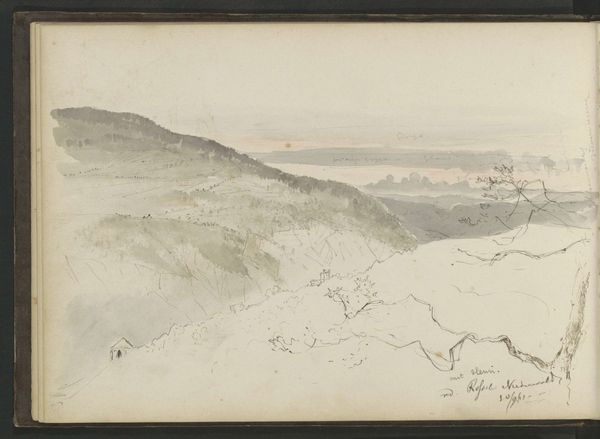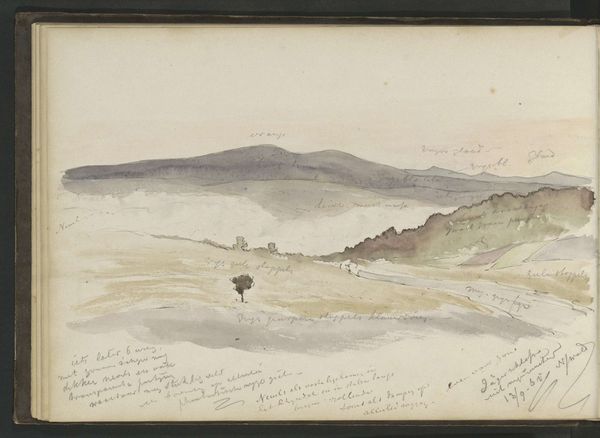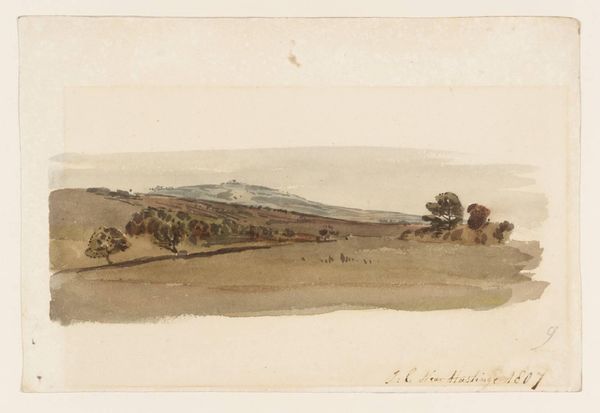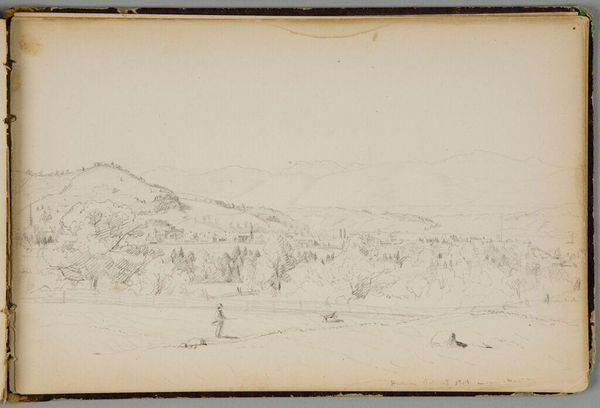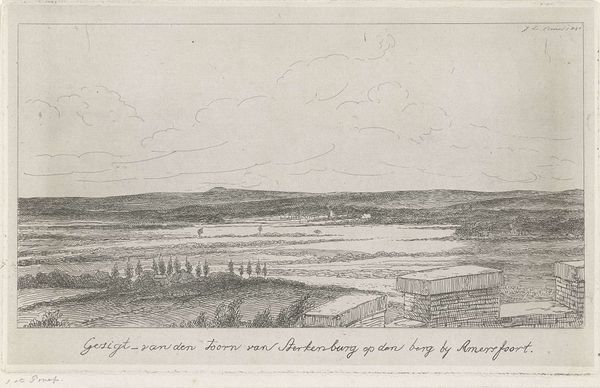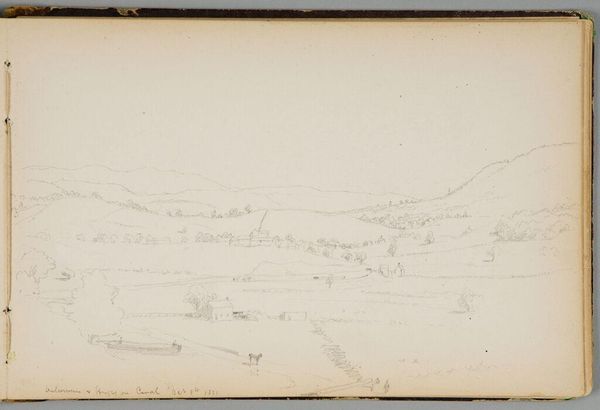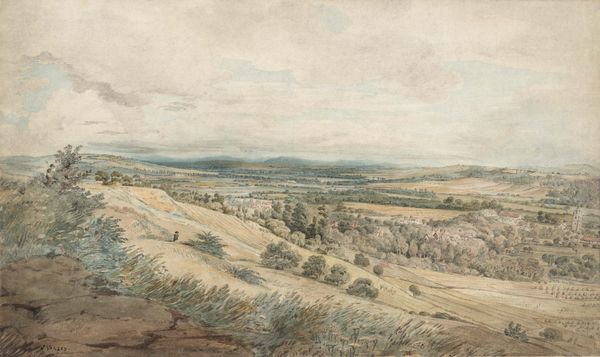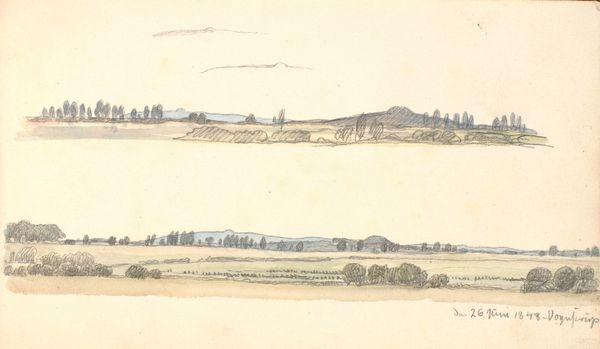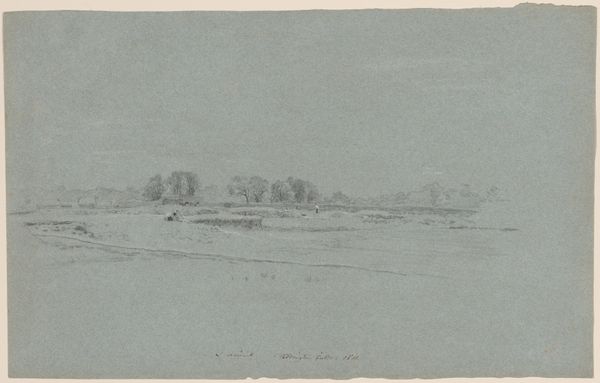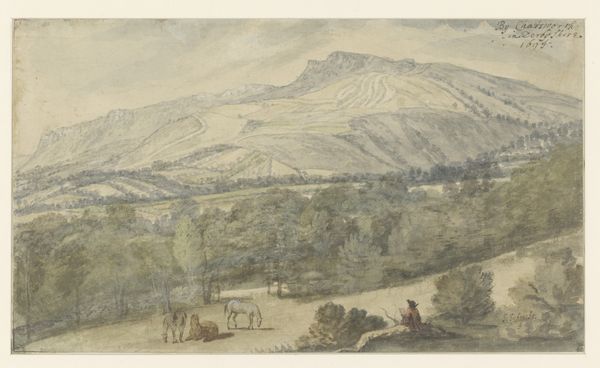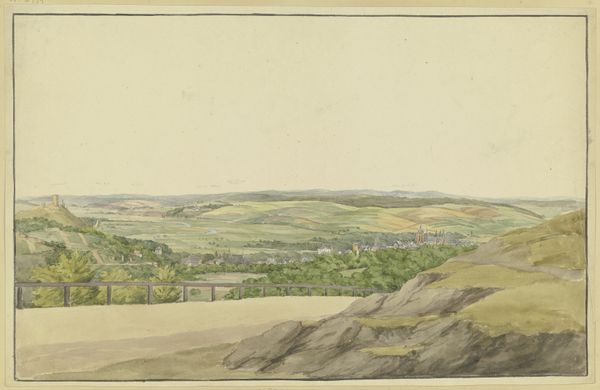
Copyright: Rijks Museum: Open Domain
Editor: This drawing, "Bos in een dal," or "Forest in a valley" by Johannes Tavenraat, from 1869, made with pencil, depicts a pretty bucolic scene. It gives off a vibe of peace and serenity. What do you see in this piece, in terms of reflecting Tavenraat's sentiments? Curator: I find myself drawn to the intimacy of the landscape; it feels like a deeply personal encounter with nature, doesn't it? The muted tones and the rather delicate pencil work evoke a sense of quiet contemplation. I imagine Tavenraat sitting there, perhaps a little lost in thought himself, capturing the essence of this specific location at that exact moment. Does the drawing transport *you* to the Dutch countryside, by chance? Editor: I think it does, especially that the muted colours sort of blend into one. Was that something that was common with drawings from this time? Curator: Very perceptive! That muted palette links back to the broader artistic movement of the time: a turn towards Realism. Artists sought to capture the world as they truly saw it, in its unfiltered beauty but also its unvarnished everydayness, wouldn't you agree? A far cry from idealized landscapes of the past. Editor: That's really interesting, a sort of subdued romance with reality. Curator: Precisely! And perhaps a foreshadowing of later landscape explorations by artists who followed. I see now that there's always more beneath the surface of even the quietest scenes. Thank you for highlighting this. Editor: I hadn't really thought about it that way before. Thanks for the new perspective!
Comments
No comments
Be the first to comment and join the conversation on the ultimate creative platform.
